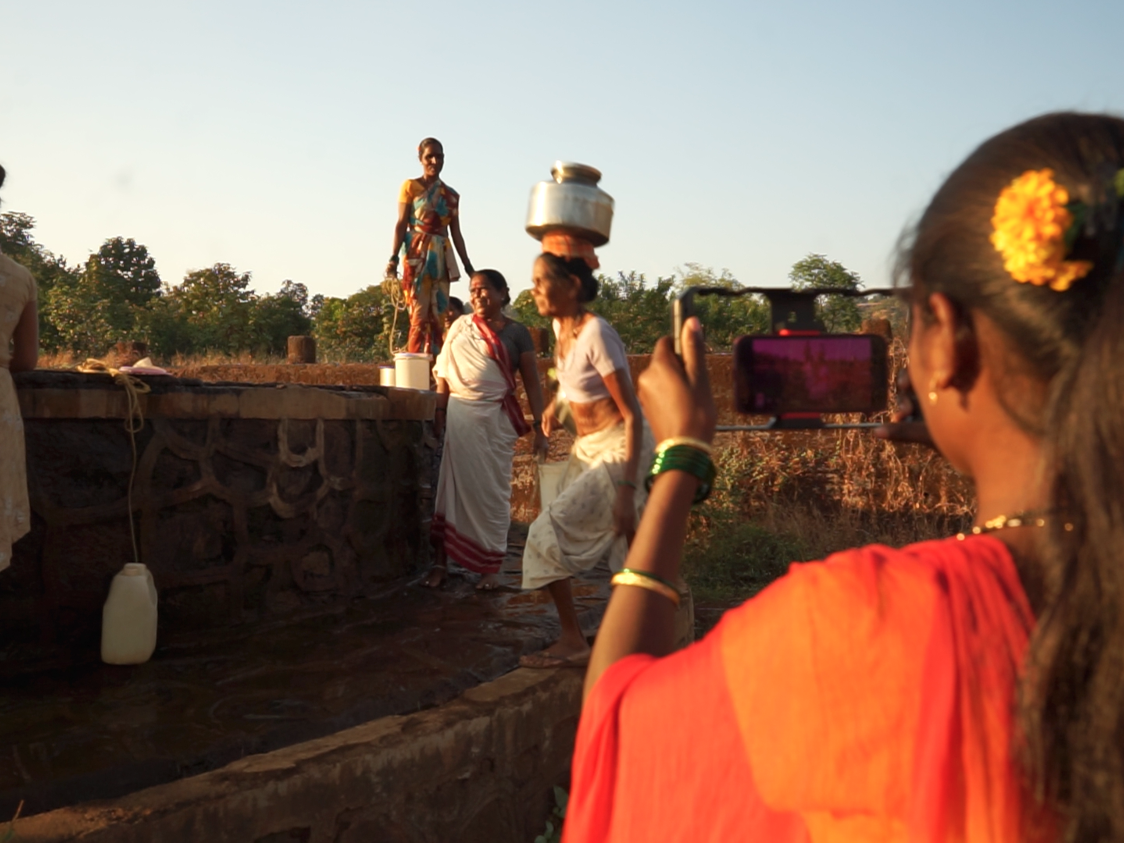
Participatory Video: Our Field Guide
Welcome to our Participatory Video Field Guide. To evaluate the success of our solar-powered community building (the Solar OASIS), we worked with InsightShare to provide the rural Indian residents with the means to produce their own film exploring how the building has impacted their lives. We hope this toolkit can support others carrying out their own participatory video projects.
The Background: Social Science Research at SUNRISE
The SUNRISE project aimed to develop and test low-cost sustainable energy systems in rural Indian communities. One of its key outcomes was the installation of a solar-powered demonstrator community building (the Solar OASIS) in Khuded, rural Maharashtra. The Solar OASIS was ‘handed over’ to the community in July 2022 with an official inauguration ceremony on 1st November 2022.
For the Solar OASIS building to be regarded as successful we needed to think wider than technical or economic terms, and also consider social impacts (e.g. improvements in wellbeing, job creation, and economic improvements). To do this, we needed to consider the human, historical, and cultural contexts within the community. The PIPERS for SUNRISE (Public Involvement, Principles of Engagement, Remit & Strategy) programme was therefore established to explore, identify, and embed community involvement and engagement within SUNRISE. The programmed developed a Public Involvement and Engagement Strategy, which was refined during a pilot study in a village in rural Maharashtra. More information can be found here.
The Public Involvement and Engagement Strategy and PIPERS report provided the methodology for involving the community at Khuded. The Solar OASIS building needed to be tailored to the needs of the community. Our research partners from the Tata Institute of Social Sciences (TISS) carried out public engagement activities from the outset to ensure that the design and functions of the building were co-produced by the members of the village.


Monitoring and Evaluating from the Community’s Perspective
During the final stages of the SUNRISE project we wanted to understand how successful (or not) the Solar OASIS building was from the perspective of diverse community members in Khuded. Its success lies not only in the delivery of its technical aspects but also in its ability to cater to the village’s needs and aspirations. To evaluate and capture this impact, we used an approach known as Participatory Video with Most Significant Change (PVMSC). This method enables documentation in the form of before-and-after narratives, highlighting the changes brought about by the project from the perspective of the villagers.
The key question that the research aimed to cover was:
How do participants define and select the most significant changes (positive/negative) to their lives following access to the SUNRISE community resource building?
Participatory Video with Most Significant Change
What is Participatory Video with Most Significant Change?
Participatory Video (PV) is a method of involving a group or community to shape and create their own film. Participants decide what story to tell then together they plan and produce the film, including the shooting and editing so they have complete control of the narrative. The PV practitioners teach the necessary skills through games and exercises designed to support participation by anyone, regardless of their literacy level, physical ability, age or background.


Why Use Participatory Video?
It is crucial to involve community members in decision-making processes that affect their lives. Participatory Video can be an empowering process, supporting communication of needs and ideas to decision-makers and/or other groups and communities.
Furthermore, PV is an accessible way for members to participate actively in these decision-making processes. It can capture often overlooked perspectives, including marginalised communities, those with limited digital skills or access to technology, and those with difficulty using written or spoken mediums.
The process of creating a participatory video is not just about making a film, but about creating a space for collective reflection. By hearing about different experiences, participants are able to think about their own experiences in a new light, and consider new opportunities for the future. This process of reflection and exploration builds a stronger and more connected community, and creates a sense of ownership and collective responsibility.
Watch the Participatory Video Created by the People of Khuded:
Acknowledgements
We would like to thank all of the participants from Khuded who gave us so much of their time and contributed to the co-design activities described in this field guide.
Thanks to InsightShare for their expertise and training in participatory video methods, especially to Sole Muniz and Tricia Jenkins.
And thanks to Dani Kalarikalayil Raju for his expertise in participatory design methods and contributing to the designing of this field guide.
Funding Source
Determining Equitable Benefits: Achieving Transitions in renewable Energy (DEBATE) is funded by British Academy Small Research Grants scheme SRG22\220462 (2022)

